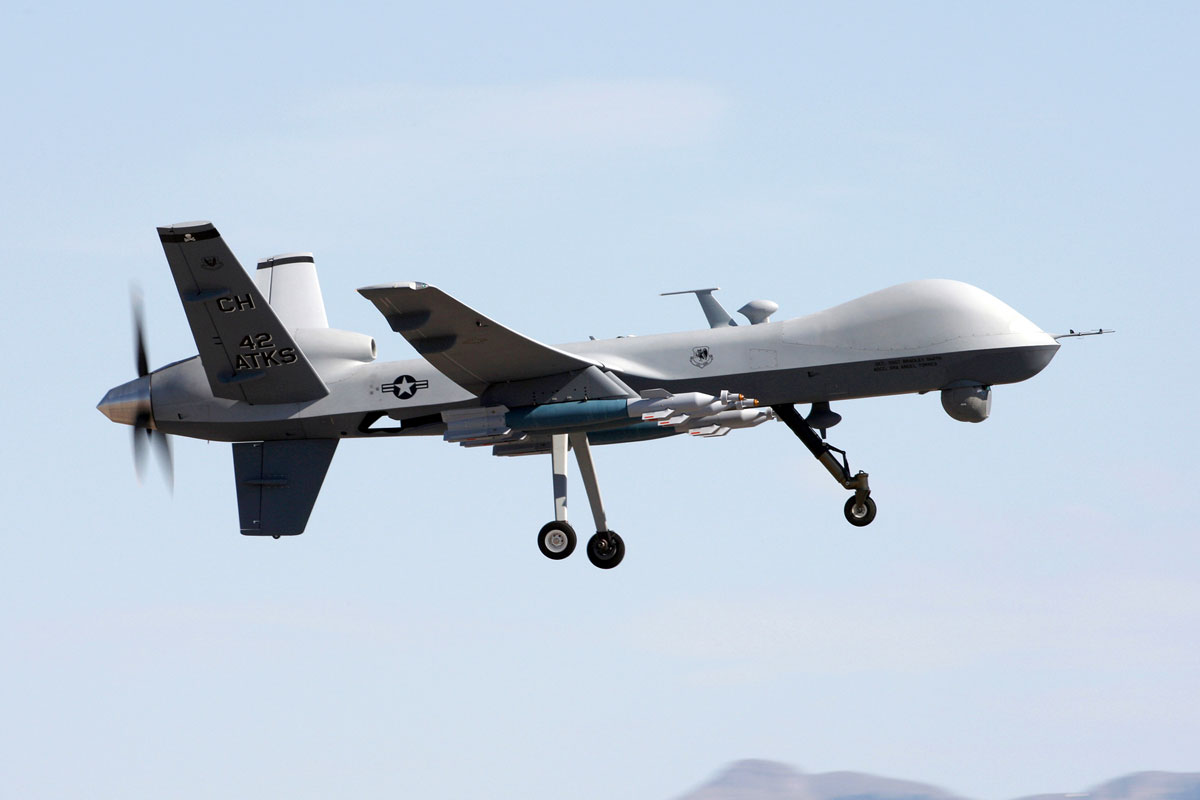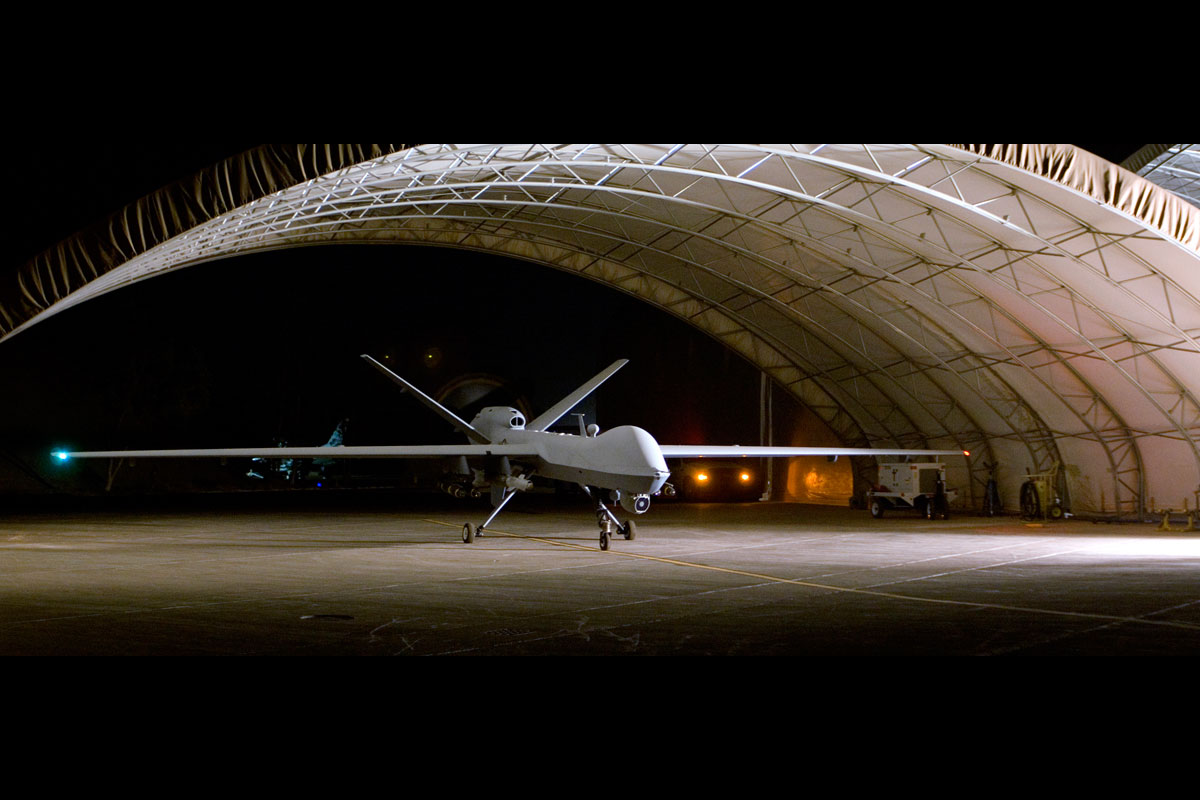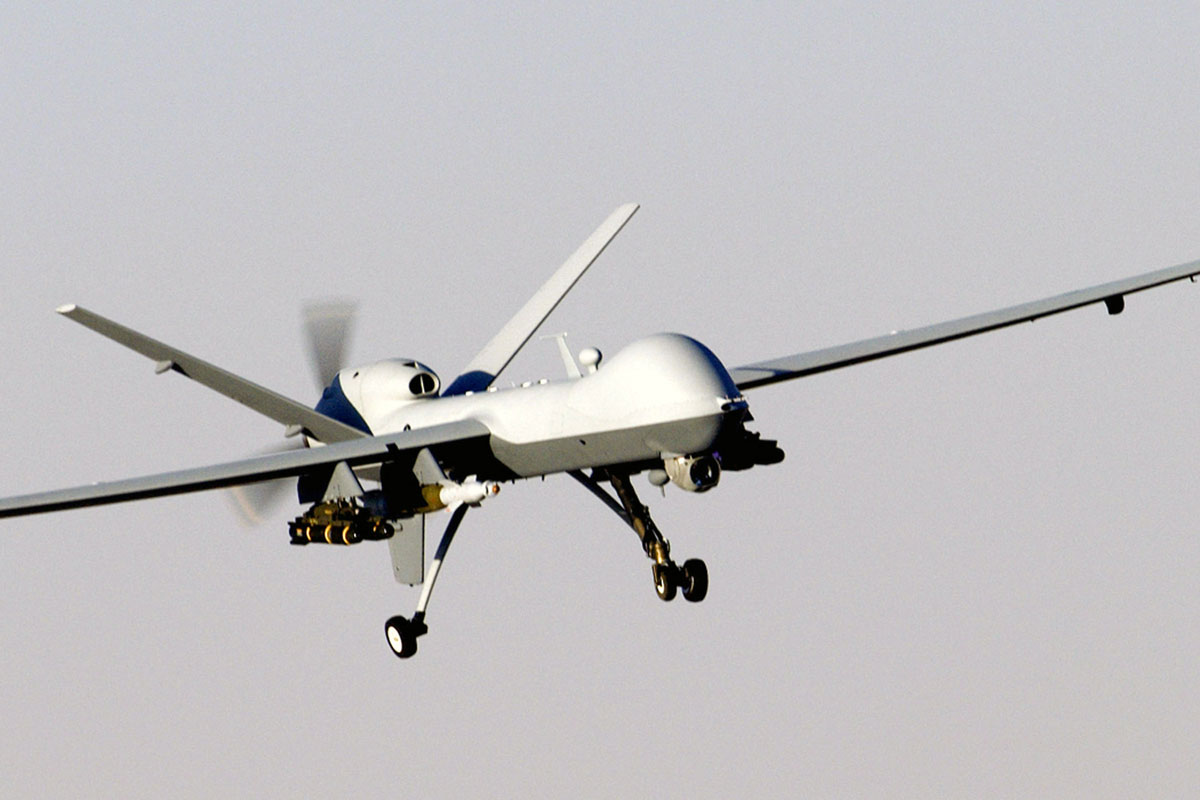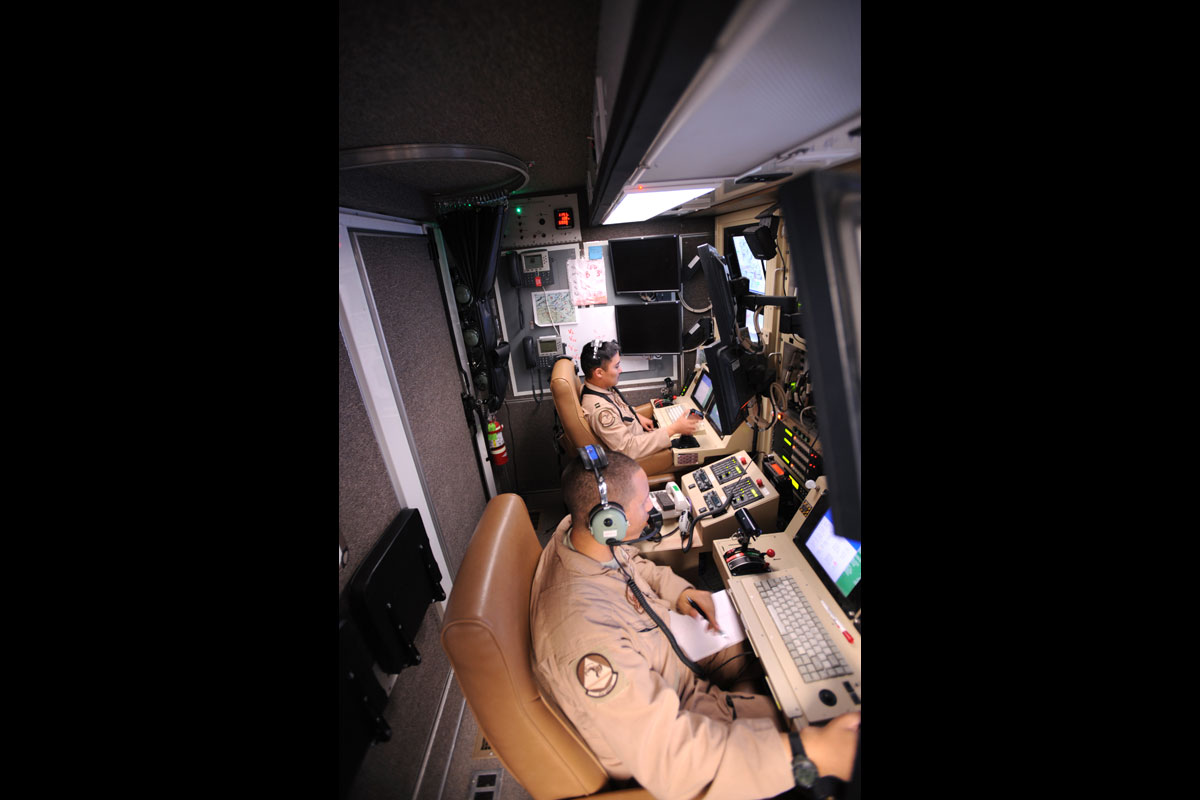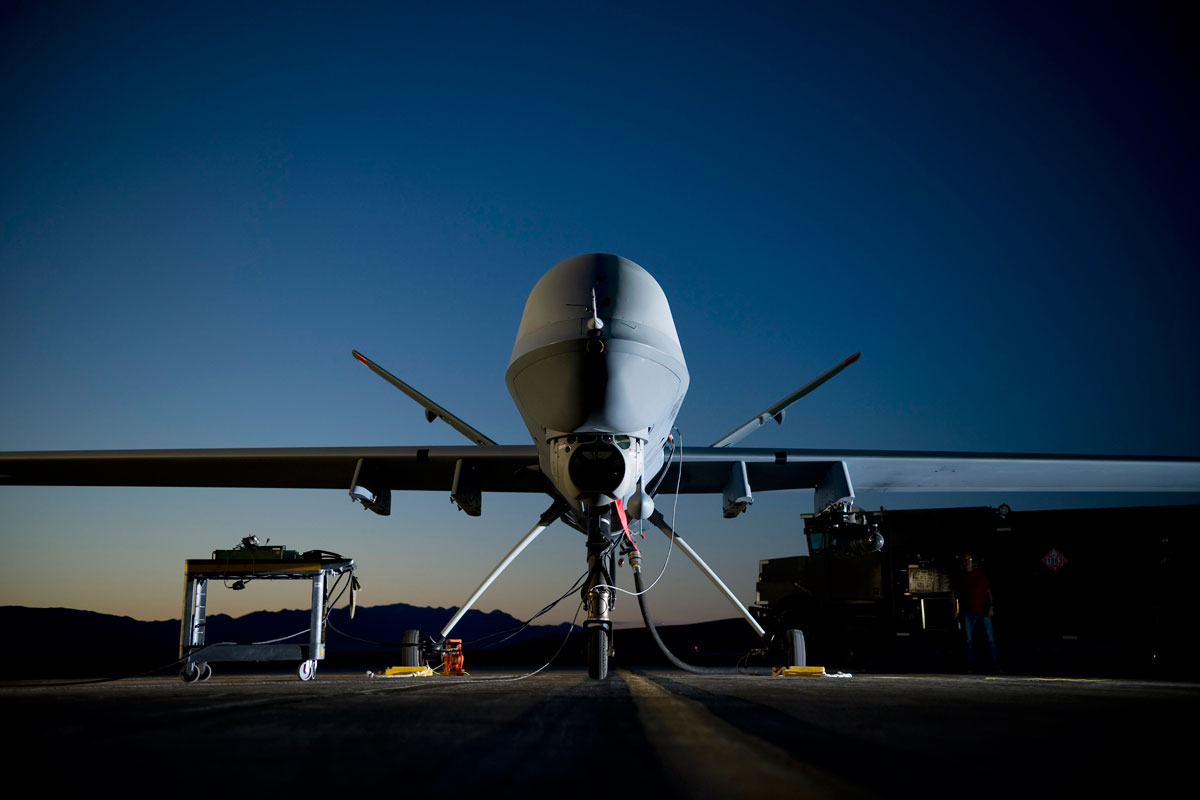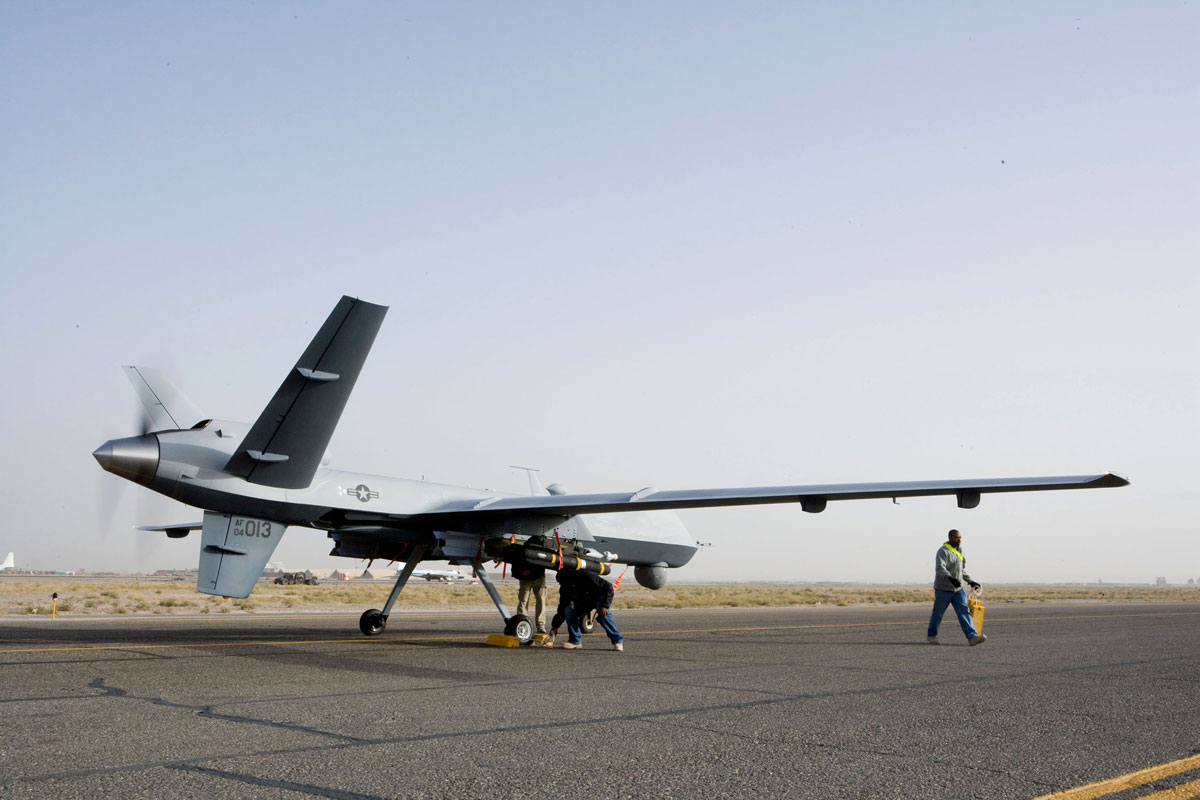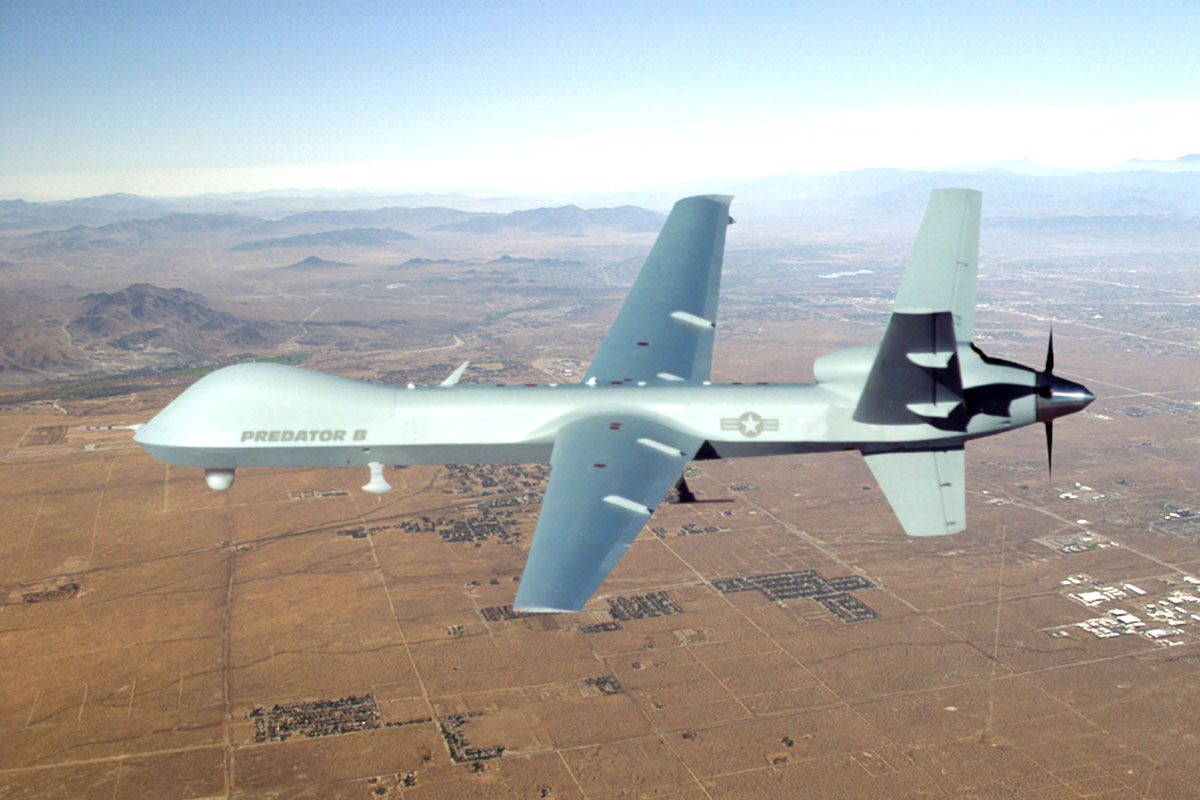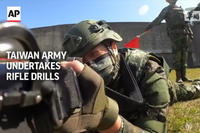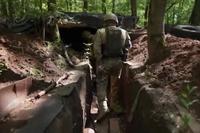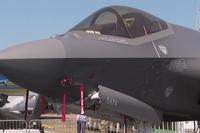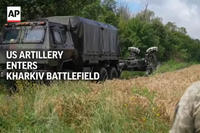Manufacturer: General Atomics Aeronautical Systems, Inc.
Service: USAF Armament: Combination of AGM-114 Hellfire missiles, GBU-12 Paveway II and GBU-38 JDAM Propulsion: Honeywell TPE331-10GD turboprop engine Speed: 230 mph Range: 1,150 miles Crew: Two (pilot and sensor operator)The MQ-9 Reaper is the primary offensive strike unmanned aerial vehicle for the U.S. Air Force. Given its significant loiter time, wide-range sensors, multi-mode communications suite, and precision weapons -- it provides a unique capability to perform strike, coordination, and reconnaissance against high-value, fleeting, and time-sensitive targets.
Reapers can also perform the following missions and tasks: intelligence, surveillance, reconnaissance, close air support, combat search and rescue, precision strike, buddy-laser, convoy/raid overwatch, route clearance, target development, and terminal air guidance.
The Reaper is part of a remotely piloted aircraft system. A fully operational system consists of several sensor/weapon-equipped aircraft, ground control station, Predator Primary Satellite Link, and spare equipment along with operations and maintenance crews for deployed 24-hour missions.
The basic crew consists of a rated pilot to control the aircraft and command the mission, and enlisted aircrew member to operate sensors and weapons as well as a mission coordinator, when required. To meet combatant commanders' requirements, the Reaper delivers tailored capabilities using mission kits containing various weapons and sensor payload combinations.
The MQ-9 baseline system carries the Multi-Spectral Targeting System, which has a robust suite of visual sensors for targeting. The MTS-B integrates an infrared sensor, color/monochrome daylight TV camera, image-intensified TV camera, laser designator, and laser illuminator. The full-motion video from each of the imaging sensors can be viewed as separate video streams or fused.
The unit also incorporates a laser range finder/designator, which precisely designates targets for employment of laser-guided munitions, such as the Guided Bomb Unit-12 Paveway II. The Reaper is also equipped with a synthetic aperture radar to enable future GBU-38 Joint Direct Attack Munitions targeting. The MQ-9 can also employ four laser-guided missiles, Air-to-Ground Missile-114 Hellfire, which possess highly accurate, low-collateral damage, anti-armor and anti-personnel engagement capabilities.
The remotely piloted aircraft can be disassembled and loaded into a single container for deployment worldwide. The entire system can be transported in the C-130 Hercules, or larger aircraft. The MQ-9 aircraft operates from standard U.S. airfields with clear line-of-sight to the ground data terminal antenna, which provides line-of-sight communications for takeoff and landing. The PPSL provides over-the-horizon communications for the aircraft and sensors.
The primary concept of operations, remote split operations, employs a launch-and-recovery ground control station for take-off and landing operations at the forward operating location, while the crew based in continental United States executes command and control of the remainder of the mission via beyond-line-of-sight links. Remote split operations result in a smaller number of personnel deployed to a forward location, consolidate control of the different flights in one location, and as such, simplify command and control functions as well as the logistical supply challenges for the weapons system.
The U.S. Air Force proposed the MQ-9 Reaper system in response to the Department of Defense directive to support initiatives of overseas contingency operations. It is larger and more powerful than the MQ-1 Predator, and is designed to execute time-sensitive targets with persistence and precision, and destroy or disable those targets. The "M" is the DOD designation for multi-role, and "Q" means remotely piloted aircraft system. The "9" indicates it is the ninth in the series of remotely piloted aircraft systems.


